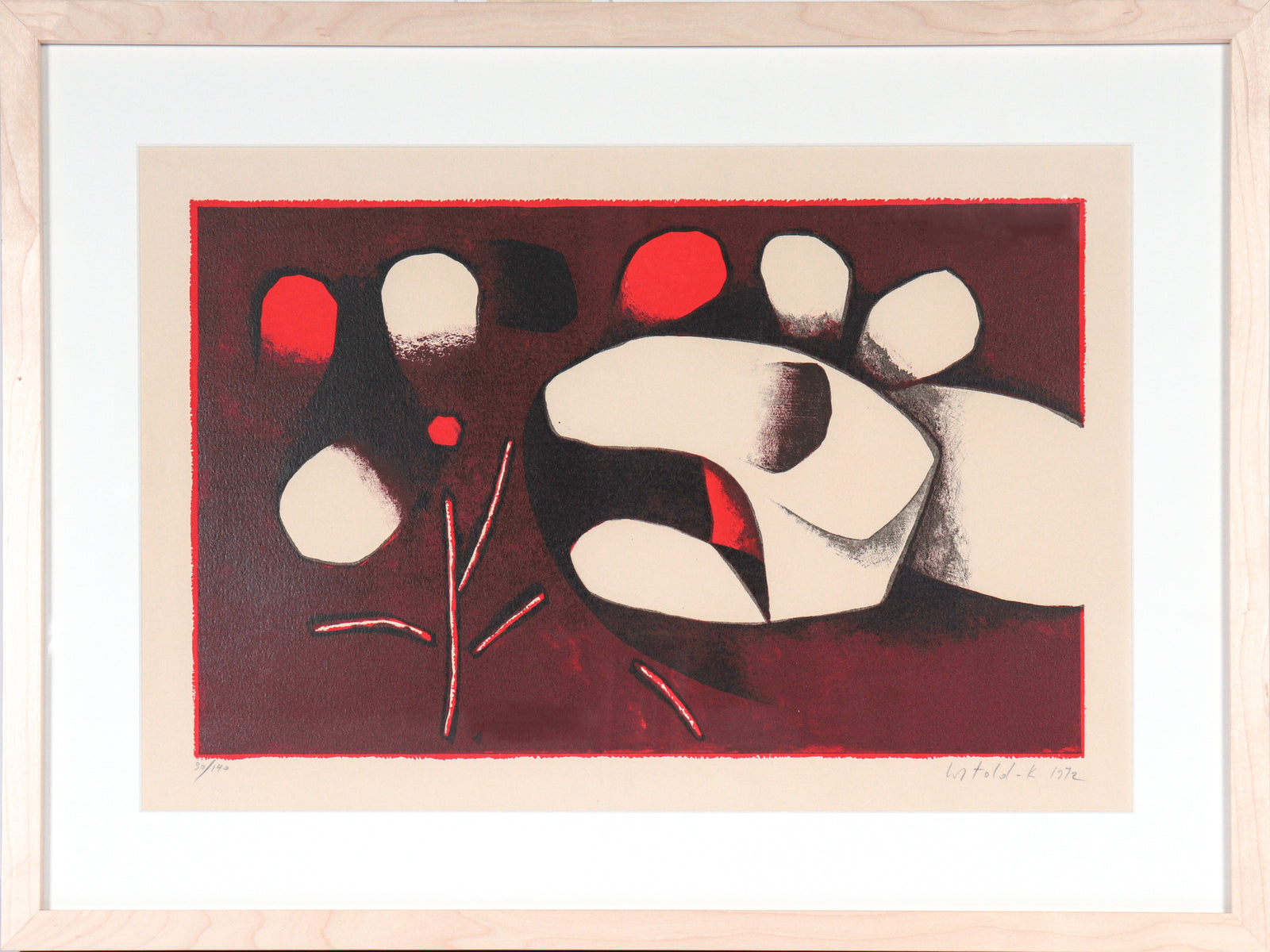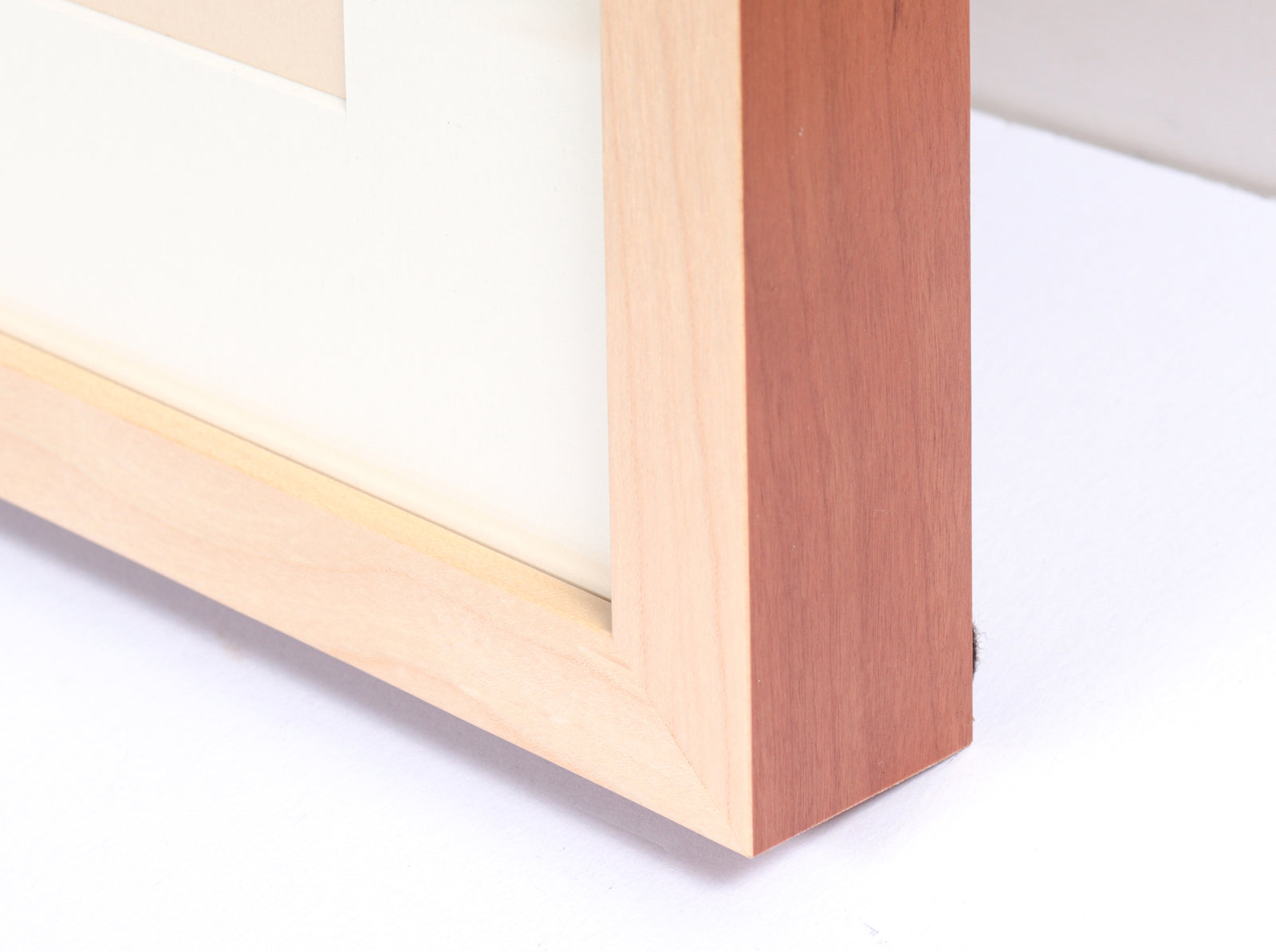

Abstracted Organic Forms
1972 Lithograph
#C4141
Sold
This 1972 abstracted lithograph is by Witold-K. (Wit Leszek Kaczanowski) was born in 1932 in Warsaw. After studies at the Academy of Fine Arts he designed posters, created - among others - artworks for the "Świat" magazine, illustrated stories of Stanisław Dygat, painted wall decorations, including the ceiling light at the theatre of the Community Centre in Oświęcim, painted paintings. He had his first individual exhibition in 1960 at the Actors' Club SPATiF in Warsaw. In those early paintings he made references to Pablo Picasso, Henry Moore, Tadeusz Makowski.
In 1964 the artist went for a scholarship to Paris, and did not come to Poland for many years. In 1968 he went to live in the USA. In 1966 he had his first exhibition abroad in Galerie 3+2 in Paris. He showed "figures", described by Jacques Prevert as "people pained with love in fleeting silence and importunate noise of everyday life. You can watch them, seeing only backs, and then you yourself - just as they are now - will be watched from the back by other visitors who will take Your place in front of the painting."
After leaving for the US, Witold-K presented abstract artworks at the international artwork exhibition in La Boetie Gallery, by the side of such celebrities as: Alexander Calder, Marc Chagall, Alberto Giacometti, Henri Matisse, Joan Miró and Pablo Picasso. In America he started to make sculptures, and even murals. He presented his works in many individual as well as collective exhibitions. In Poland we could see them in 1991 in a collective exhibition "Jesteśmy" ("We are here") organized in Zachęta, presenting the works of expatriate artists. But the biggest exhibition of his works so far was the exhibition at the auction house Sotheby in Amsterdam in 2007.
1972
Lithograph on Paper
25"x16.5"framed, 19.5"x12.75"unframed
Signed and dated on the lower right. Numbered on the lower left. Excellent vintage condition. Framed in a contemporary wood frame with a maple face and cherry edges using archival matting behind conservation clear glass.


